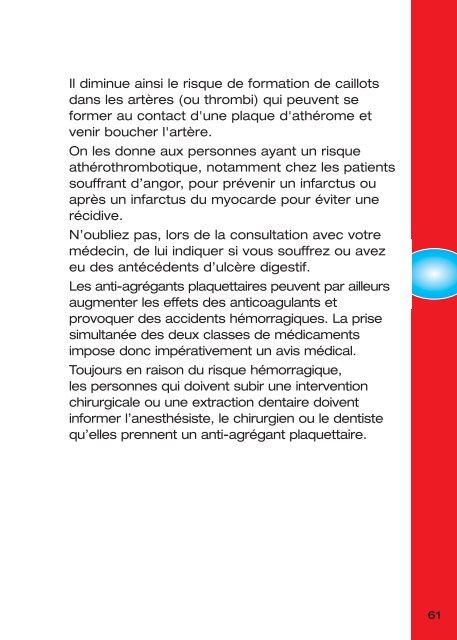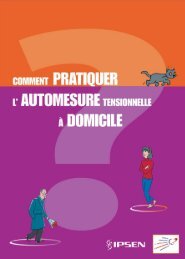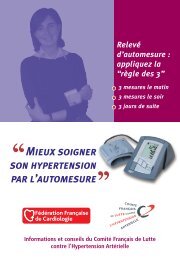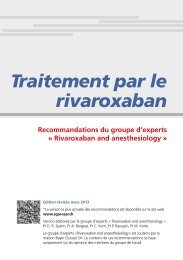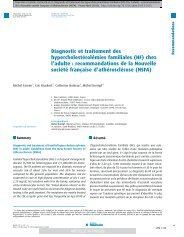Maladie Coronaire et Infarctus Du Myocarde (IDM) - Prévention des ...
Maladie Coronaire et Infarctus Du Myocarde (IDM) - Prévention des ...
Maladie Coronaire et Infarctus Du Myocarde (IDM) - Prévention des ...
You also want an ePaper? Increase the reach of your titles
YUMPU automatically turns print PDFs into web optimized ePapers that Google loves.
Il diminue ainsi le risque de formation de caillotsdans les artères (ou thrombi) qui peuvent seformer au contact d'une plaque d'athérome <strong>et</strong>venir boucher l'artère.On les donne aux personnes ayant un risqueathérothrombotique, notamment chez les patientssouffrant d’angor, pour prévenir un infarctus ouaprès un infarctus du myocarde pour éviter unerécidive.N’oubliez pas, lors de la consultation avec votremédecin, de lui indiquer si vous souffrez ou avezeu <strong>des</strong> antécédents d’ulcère digestif.Les anti-agrégants plaqu<strong>et</strong>taires peuvent par ailleursaugmenter les eff<strong>et</strong>s <strong>des</strong> anticoagulants <strong>et</strong>provoquer <strong>des</strong> accidents hémorragiques. La prisesimultanée <strong>des</strong> deux classes de médicamentsimpose donc impérativement un avis médical.Toujours en raison du risque hémorragique,les personnes qui doivent subir une interventionchirurgicale ou une extraction dentaire doiventinformer l’anesthésiste, le chirurgien ou le dentistequ’elles prennent un anti-agrégant plaqu<strong>et</strong>taire.61


